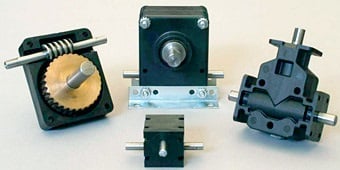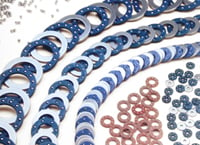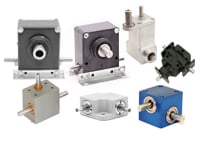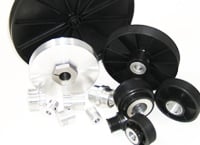We’ve come across a lot of questions recently about gearboxes and speed reducers. So, in this article, we’ll pull together all the info you need to understand speed reducers and gearboxes.
Speed Reducer vs. Gearbox

When looking at speed reducer vs. gearbox often the only difference is terminology. This is because all speed reducers are gearboxes. However, not all gearboxes are speed reducers. This might sound a bit complicated, but it’s actually pretty straight forward.
Speed reducers are gear trains between a motor and a piece of machinery. The purpose of the speed reducer is to reduce the rpm that is transmitted between these two end points. Speed reducers take the torque created by the motor (the input) and multiply it. Second, speed reducers, much as the name implies, reduce the speed (the rpm output) of the input so that the output is the correct speed.
The term “gearbox” is simply a generic term for a gear train between a motor and a piece of machinery. Hence, all speed reducers are gearboxes.
However, not all gearboxes reduce the speed of the input. While not common, gearboxes can actually be tooled to increase the speed of the input. By far the most common type of gearboxes are speed reducers, but it wouldn’t be correct to say all gearboxes are speed reducers.
Click here to read more about What is a Speed Reducer?
What is a right angle gearbox?
We recently published an article that deals directly with this question, which you can read here. Simply put, however, a right-angle drive is a mechanism with a gear train that can transmit torque/rpm 90 degrees, to turn a corner.
How do speed reducers work?
You can find that answer in this article. A quick answer, however, is that the output gear of a speed reducer has more teeth than the input gear. So, while the output gear might rotate more slowly, reducing the speed of the input, the torque is increased.
How do you select a gearbox or gearbox supplier?
We recently wrote a guide just for you! In the guide, we tackle ten of the most important things to consider when selecting a gearbox supplier.
These include:
- Buy from the manufacturer or from distribution?
- How to set quality standards
- Determining product specifications
- What makes up the cost of a gearbox
- What is a reasonable lead-time?
- Design process
- Quoting
- Testing
- Formal drawing process and the final quote
- Approval and purchase orders
The How to Select a Gearbox Supplier guide will allow you to confidently select a supplier and work your way through the ordering process.
Click on the Download Now button above or here for your free copy of the guide!
Or... Call 440-352-8995 and chat with us about your needs!







